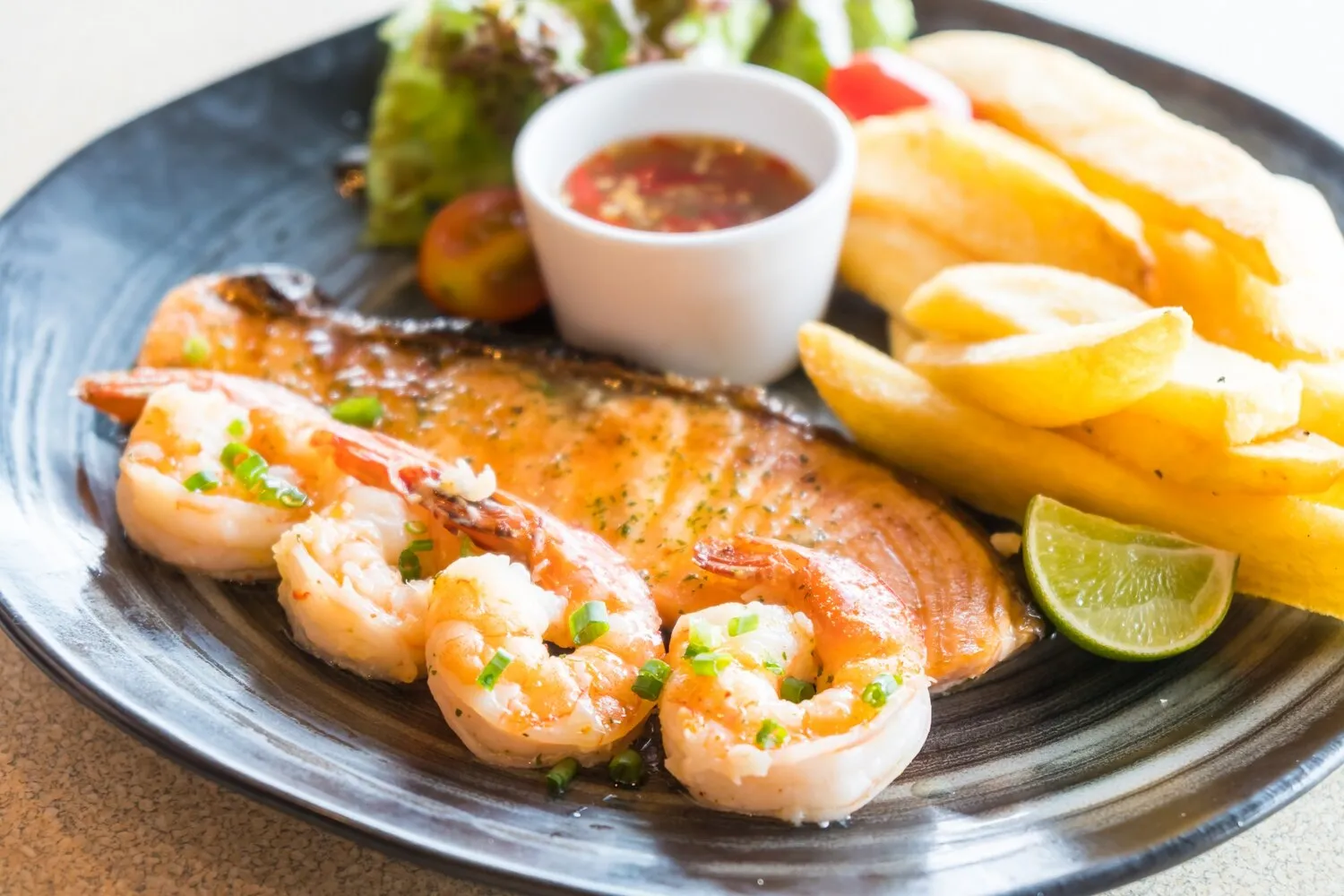
Seafood Dishes
Given its location in Nantes, Fleur de Sel is known for offering a variety of fresh seafood dishes. While specific dish names are difficult to extract without a menu, seafood in general is highly recommended and a characteristic offering.
Nutrition Facts
* The % Daily Value (DV) tells you how much a nutrient in a serving of food contributes to a daily diet. 2,000 calories a day is used for general nutrition advice.
Seafood dishes have a history as old as humanity itself. Coastal communities worldwide have relied on the sea for sustenance, developing diverse culinary traditions centered around fish, shellfish, and other marine life. Different cultures have embraced unique cooking methods and flavor profiles, shaping the vast world of seafood cuisine.
Seafood dishes hold significant cultural importance in many coastal communities, often representing a connection to the sea, local traditions, and celebrations. They frequently feature prominently in festive meals and regional specialties.
Mediterranean Seafood Feasts
In Mediterranean cultures, seafood is often the centerpiece of large family gatherings and celebrations. Dishes like paella, bouillabaisse, and grilled whole fish represent the bounty of the sea and communal dining.
Japanese Sushi and Sashimi
Japanese cuisine elevates seafood to an art form with dishes like sushi and sashimi, emphasizing the freshness, quality, and presentation of the ingredients. The preparation and consumption are often steeped in ritual and tradition.
New England Clam Bakes
New England clam bakes are a traditional social event centered around steaming seafood, potatoes, and corn in seaweed-lined pits, representing a connection to the region's maritime heritage.
Seafood dishes offer a vast spectrum of flavors, from delicate and subtly sweet to rich, briny, and intensely savory. The flavors are heavily influenced by the type of seafood used, the cooking method employed, and the accompanying ingredients.
The specific flavors depend greatly on the seafood itself. Flounder and sole have mild, delicate flavors. Salmon offers a richer, oilier taste. Shrimp and lobster provide sweetness, while oysters and clams deliver a characteristic brininess. Common flavor enhancements include lemon, garlic, herbs (like parsley, dill, and thyme), butter, olive oil, chili peppers, and various spices. Sauces play a significant role, ranging from creamy béchamel and tangy marinara to vibrant Asian-inspired glazes.
Freshness is Key
Always choose the freshest seafood available. Look for firm flesh, bright color, and a clean, fresh smell. Avoid seafood with a fishy odor or slimy texture.
Don't Overcook
Seafood cooks quickly and easily becomes overcooked, resulting in a dry and rubbery texture. Cook just until the fish is opaque and flakes easily with a fork, or until shellfish turn pink or red.
Pair Flavors Wisely
Consider complementary flavors when seasoning and saucing seafood. Lemon, herbs, garlic, and white wine are classic pairings, but don't be afraid to experiment with other spices and sauces.
Proper Storage
Store seafood properly to maintain freshness. Keep it refrigerated at a temperature of 40°F (4°C) or below. Consume within one to two days of purchase.
Explore additional Fresh dishes and restaurants
Explore FreshDiscover top dining spots and culinary experiences in Nantes.
Explore NantesLearn more about the food culture, restaurant scene, and culinary heritage of France.
Explore France